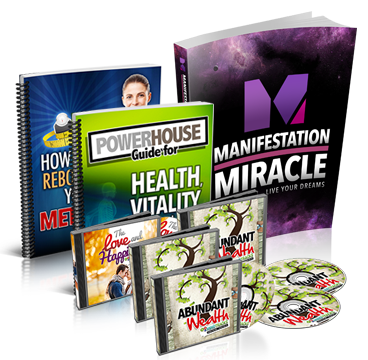Most of us do need to read at least something throughout the day.
Whether it is reading newspapers, magazines, educational books, novels, articles, journals or just some blog posts, if you know how to speed-read, you're going to get so much more done.
In short, speed reading is the process of scanning through text while at the same time still taking in all the information and understanding them.
This is something some trained people are very good at while most struggle with it, so let's take a look at the core 4 principles of speed reading so that you can use them today and save your time.
Principle #1 Use a Tool To Assist Your Reading
One easy way to speed-read immediately is to use some online software such as spreeder.
Spreader is a program that lets you paste a large amount of text into a website and then quickly runs through all the words, showing you one word at a time for a set duration.
You can choose that duration and then by looking at the word count, the program can tell you precisely how long it will take to read that content.
You will be surprised that you can read a very huge novel in a just couple of hours.
Alternatively, if you are reading a physical book, you should always use a pointer (your finger, a pen or whatever) to locate the words as you read.
This avoids the extra time spent when you lose track by solely relying on your eyes.
Principle #2 Use 'Jumps'
Normally we read by letting our eyes scan left to right across the page.
You can speed this process up by letting your eyes 'jump' from one block of text to the next and by taking mental snapshots as you go.
When you do this, you may notice you are no longer sounding the words out to yourself (a bad habit known as subvocalization) but instead just trying to take the meaning in.
This is a great thing to develop because you're removing the need to mentally verbalize, so that you can start reading with 'unsymbolized thought' much quicker.
Principle #3 Time & Track Yourself
Timing yourself at any task is an easy way to get quicker.
Likewise, if you're giving yourself 30 minutes to read in the evening, why not challenge yourself to see how many pages you can get through and then try to better that next time?
What gets measured gets improved.
Eventually, you will be able to go a little faster than you can comfortably understand while maintaining the overall comprehension.
Principle #4 Have a Goal In Mind
Often we don't really need to read every single word in an article or even a book.
If you're trying to get a specific piece of information from the text, then set out with the goal of retrieving that and then look only for relevant content in the page.
This is a fantastic way to research things as normally you are much more productive to skim quickly for specific information instead of wasting time reading long paragraphs.
With these core 4 principles, you are now equipped with some of the best tools to enjoy the benefits of speed reading. Try them out and double your productivity today!
Whether it is reading newspapers, magazines, educational books, novels, articles, journals or just some blog posts, if you know how to speed-read, you're going to get so much more done.
In short, speed reading is the process of scanning through text while at the same time still taking in all the information and understanding them.
This is something some trained people are very good at while most struggle with it, so let's take a look at the core 4 principles of speed reading so that you can use them today and save your time.
Principle #1 Use a Tool To Assist Your Reading
One easy way to speed-read immediately is to use some online software such as spreeder.
Spreader is a program that lets you paste a large amount of text into a website and then quickly runs through all the words, showing you one word at a time for a set duration.
You can choose that duration and then by looking at the word count, the program can tell you precisely how long it will take to read that content.
You will be surprised that you can read a very huge novel in a just couple of hours.
Alternatively, if you are reading a physical book, you should always use a pointer (your finger, a pen or whatever) to locate the words as you read.
This avoids the extra time spent when you lose track by solely relying on your eyes.
Principle #2 Use 'Jumps'
Normally we read by letting our eyes scan left to right across the page.
You can speed this process up by letting your eyes 'jump' from one block of text to the next and by taking mental snapshots as you go.
When you do this, you may notice you are no longer sounding the words out to yourself (a bad habit known as subvocalization) but instead just trying to take the meaning in.
This is a great thing to develop because you're removing the need to mentally verbalize, so that you can start reading with 'unsymbolized thought' much quicker.
Principle #3 Time & Track Yourself
Timing yourself at any task is an easy way to get quicker.
Likewise, if you're giving yourself 30 minutes to read in the evening, why not challenge yourself to see how many pages you can get through and then try to better that next time?
What gets measured gets improved.
Eventually, you will be able to go a little faster than you can comfortably understand while maintaining the overall comprehension.
Principle #4 Have a Goal In Mind
Often we don't really need to read every single word in an article or even a book.
If you're trying to get a specific piece of information from the text, then set out with the goal of retrieving that and then look only for relevant content in the page.
This is a fantastic way to research things as normally you are much more productive to skim quickly for specific information instead of wasting time reading long paragraphs.
With these core 4 principles, you are now equipped with some of the best tools to enjoy the benefits of speed reading. Try them out and double your productivity today!
Do you REALLY not know the 5 Little Known Ways To Double Your Productivity yet? Join hundreds of other guys who are already using it right now in my step-by-step free training. Feel free also to check out my value-packed productivity blog here.
source
source









Comments
Post a Comment